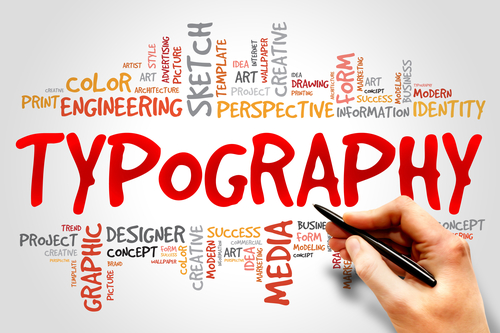
3 Amazing Careers to Consider in the Arts, #2: Typography, Documentaries, and Children’s Books
If you are someone who enjoys learning and expressing yourself visually, there are many careers that might suit your temperament and talents. Here is a sample of three awesome careers in the arts that will challenge and reward a visually oriented creator: typography, documentary film creation, and children’s book illustration.

Typography
Do you enjoy designing your own style of letters?

If so, you may be drawn to and gifted in the practice of typography. Typography is the design of unique types or fonts. It is a specialized branch of graphic design. Graphic design is generally considered to be a purposeful type of visual creation, and not “art for art’s sake.” Graphic designers use images and type to communicate messages, solve problems, and make many forms of media more engaging and alluring. CreativeMarket.com suggests that, when considering this career, you answer this question: “are you really into the shapes of letters and how they work together?”
The majority of contemporary graphic design is carried out through Computer Aided Drafting (CAD) programs or through a mixture of hand and computer generated works. So, if you are considering this career, it’s important that as well as liking shapes, lines, words, and communication, you are comfortable with technology. To specialize in typography, you should plan to earn a degree in graphic design and focus your coursework in typography as you advance in your studies. Other important steps in your career as a typographer will likely include internships, portfolio development, and continuing professional development as new technologies in the field emerge. During your work as a typographer, you may create new h
and-drawn fonts, revise classic fonts in your own style, or experiment with your own method of creating fonts. Your fonts might be used in books, advertising, websites, or other formats, and you might work with a design firm or as a freelancer.
Documentary Filmmaking
A documentary is generally defined as a piece of media that endeavors to give a factual, rather than subjective, record or report. It might take the form of a movie, TV show, podcast, radio, or web series, among other possible variations. A documentarian or documentary filmmaker aims to capture reality in a way that is both educational and captivating to the audience. Documentaries are often known to delve into little-known or under-appreciated areas of history, culture, and biography. So, if you are a storyteller who wants to inform and elucidate through factual storytelling, documentary filmmaking may be a great career for you.
If you are thinking about working in the field of documentaries, immerse yourself in the type of work that you would like to make, and choose a preferred media focus. Do you see yourself telling stories online, on TV, in a movie theater, or in a public museum? In terms of your educational track, you will likely want to research schools that offer degrees in film production with a focus on documentary and non-fiction works. You will need a variety of skills to succeed as a documentarian, including research, writing, networking, storytelling, and basic office and IT skills. In terms of technical filming skills, be prepared to master filming, editing, photography, and possible web design, probably focusing on Adobe creative programs. You will likely get to develop all of these in your film studies and internship experiences. When you are finally in a position to create your own documentary, be sure to choose a topic that resonates with you so that your interest and commitment to the material will be evident and compelling even in a factual and objective piece of work.
Children’s Book Illustration
As you likely remember from your younger years, illustrations can really bring a children’s book to life and influence a reader’s experience of the story. If you appreciate the relationship between text and image in communication and love children’s literature, you may find illustrating children’s books very fulfilling. Like working in typography, illustrating children’s books can be done through employment at a firm or in a freelance capacity and likely involves a mixture of hand drawing and CAD processes. To develop a strong children’s book illustration portfolio, you should plan to attend college in the field of illustration with a focus on kid’s books. Study.com explains that classes such as, “drawing strategies, contemporary art, drawing techniques, technology in illustration, and illustration markets” will all improve your chances of becoming a successful children’s book illustrator. As with other creative fields, internships and apprenticeships, which your school can often help you to acquire and give you credit for, will also help you to build connections and gain valuable hands-on experience. Remember that having an online portfolio and good references are excellent ways to market yourself.
Once you land a professional children’s book illustration gig that you feel suits your style, there are several steps to go through before a finished book emerges. You will typically need to negotiate a price, sign a contract, create storyboards or initial sketches of each page, and produce both black and white and color versions of the artworks you’ll be providing, The publisher and possibly the author or other involved individuals will be approving and consulting with you on all of these steps, so interpersonal and communication skills are also essential in this field. A children’s book illustrator may take on cover or packaging illustration for a book as well.
Hopefully, this has been a helpful glance at a few awesome careers in the arts. Remember that The U.S. Bureau of Labor Statistics is always a great resource to learn about the outlook and average salaries for any career you’re considering.
Written by Julia Travers
Contact us today to learn more about how our tutors can help your child this fall!



